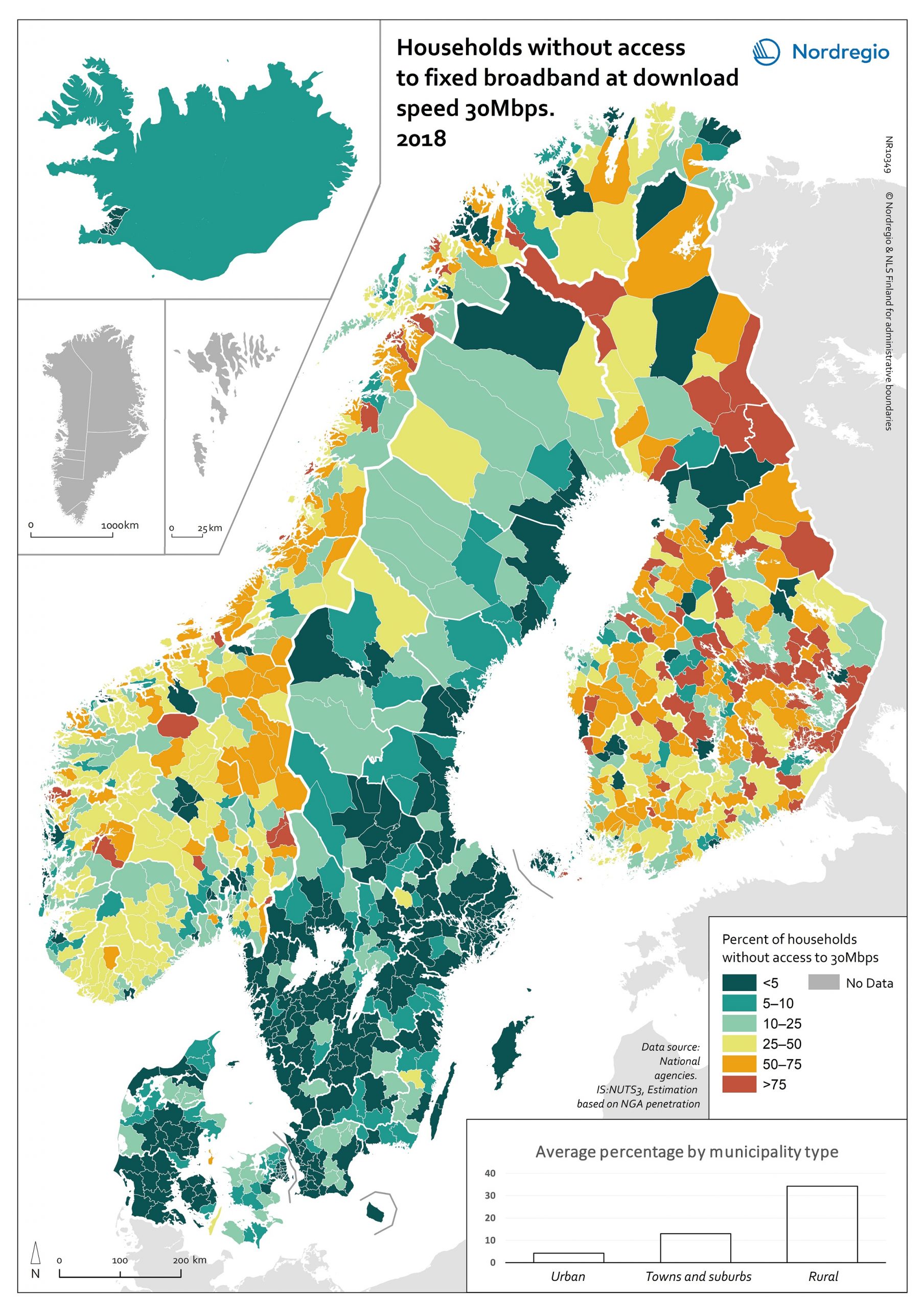The map shows the proportion of households within each municipality that did not have access to a fixed-line broadband connection with a download speed above 30 Mbps in 2018.
Put another way, the map shows the proportion of households which only had access to basic broadband. In Danish, Icelandic and Swedish municipalities, the proportion of households which only have basic broadband is rather small. In contrast, more than half of all households rely on basic broadband in many Norwegian and Finnish municipalities. The situation in Finland is particularly striking, with several municipalities in which over 75% of households have only basic Internet access.
The average coverage by municipality type shows a clear digital divide between urban and rural municipalities. On average, fast broadband is available to all but 4% of households in urban municipalities. In contrast, approximately one third of households in rural municipalities do not have access to any faster broadband than 30 Mbps. The largest urban-rural digital divide is to be found in Norway and Finland. However, the pace of fibre development has never been higher. Particularly noteworthy is the strong growth in fibre-based broadband taking place outside of the densely populated areas.



